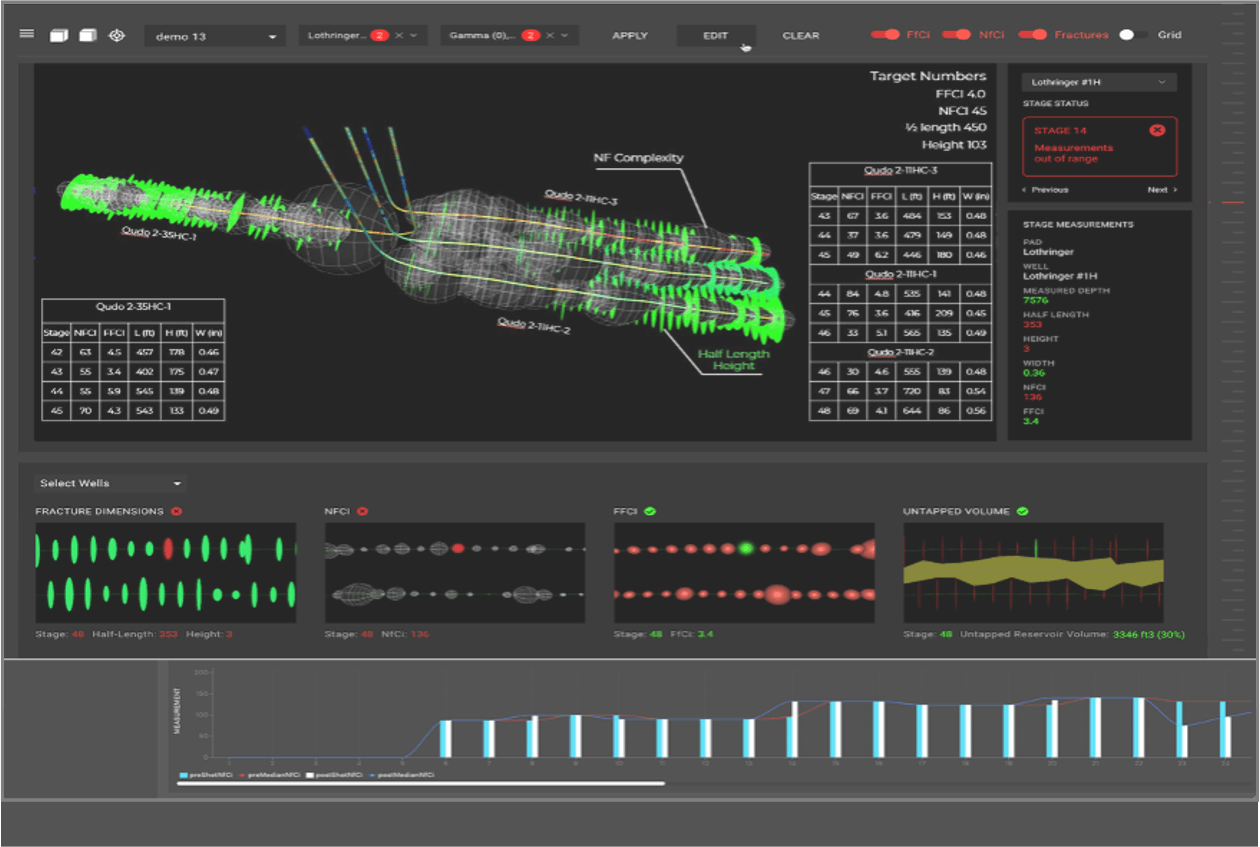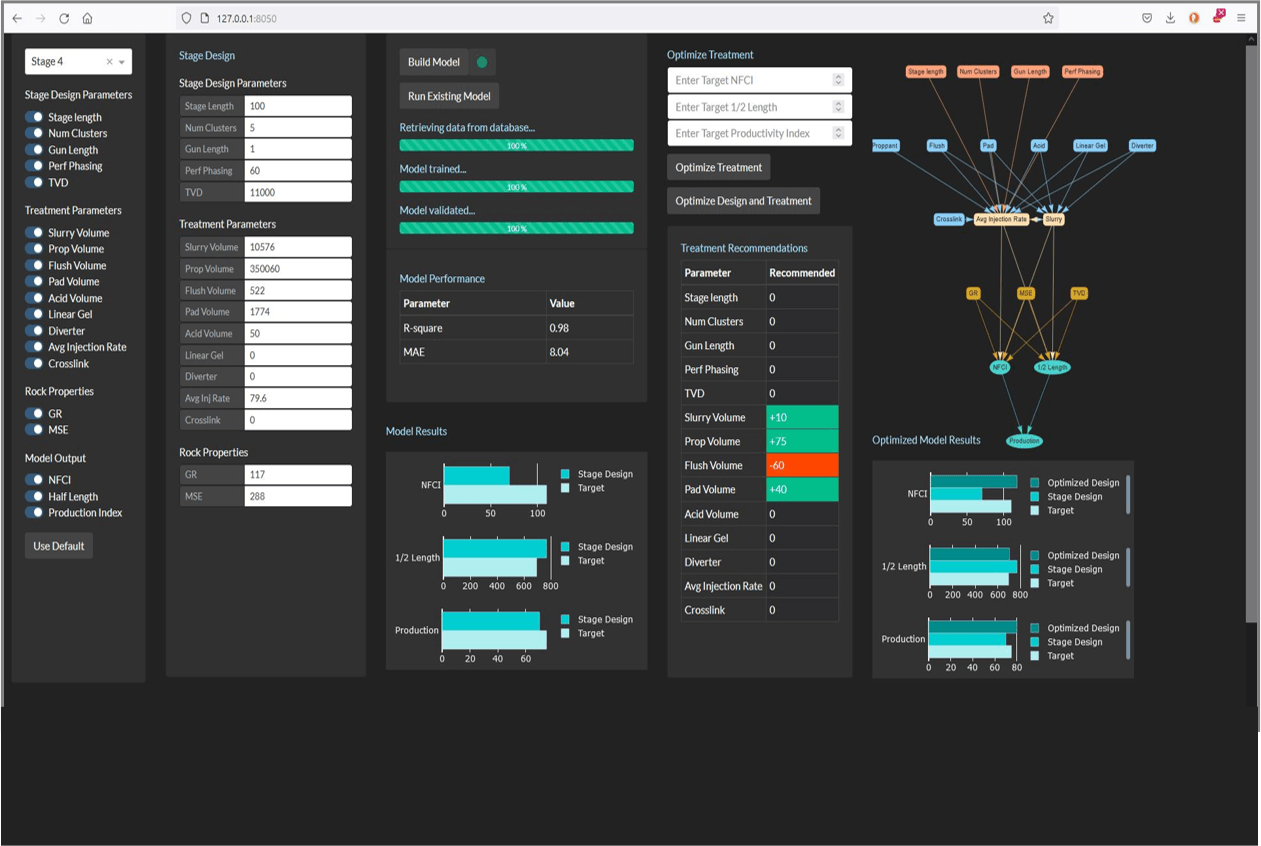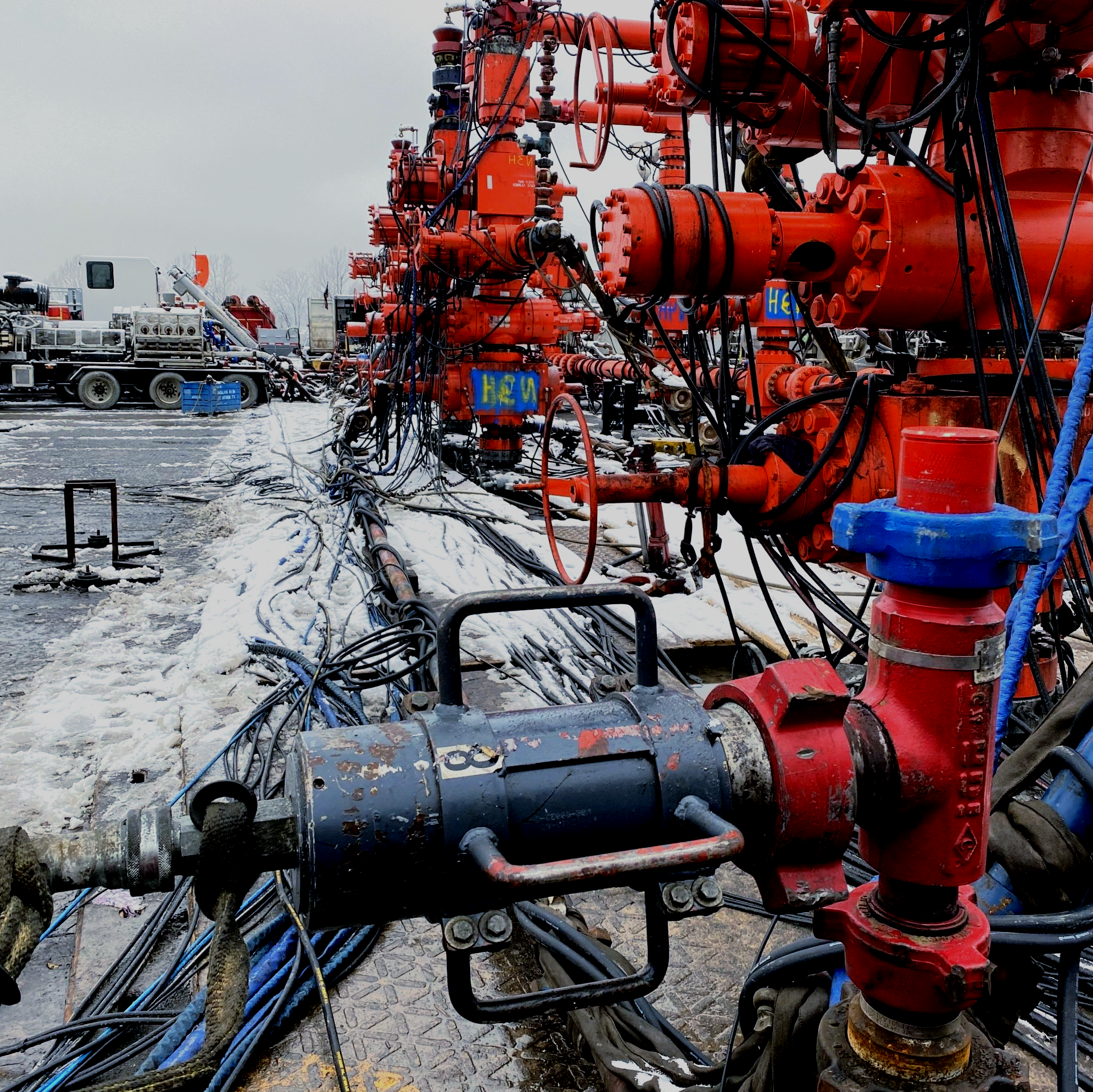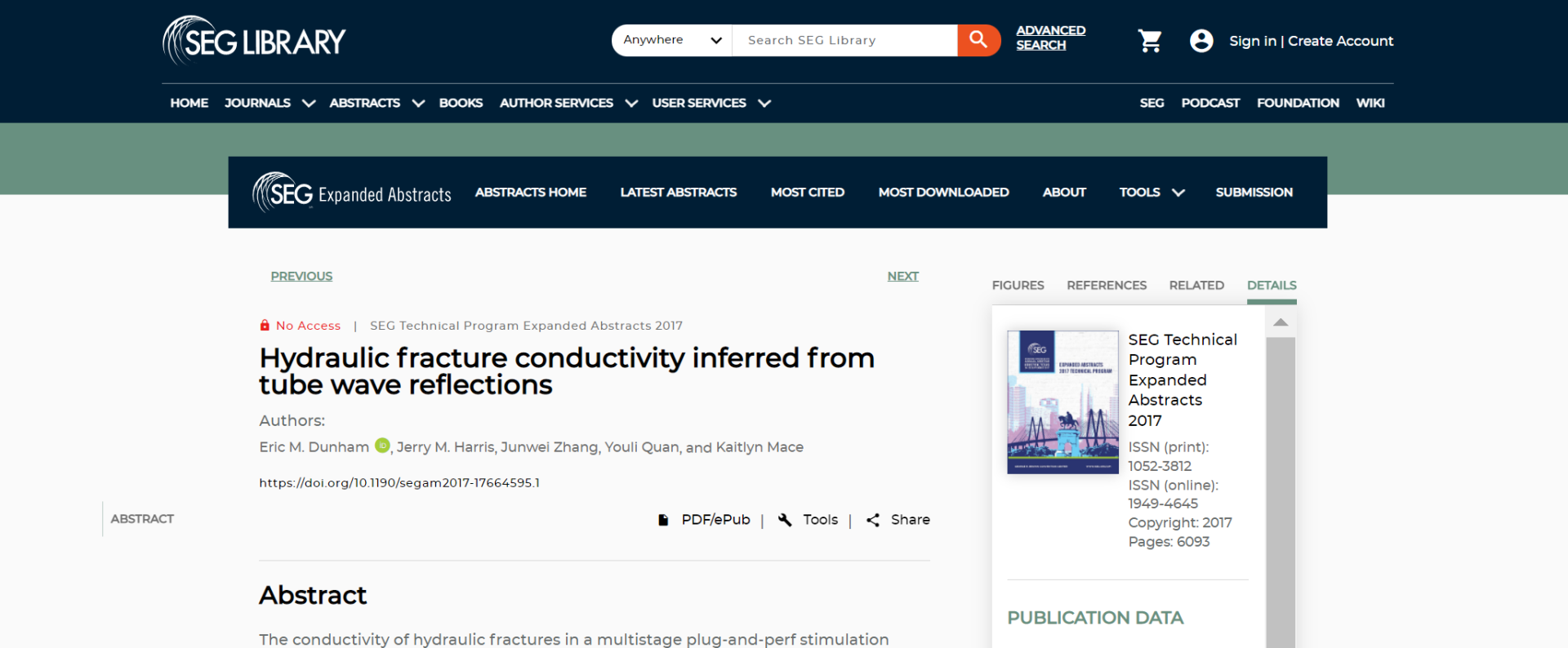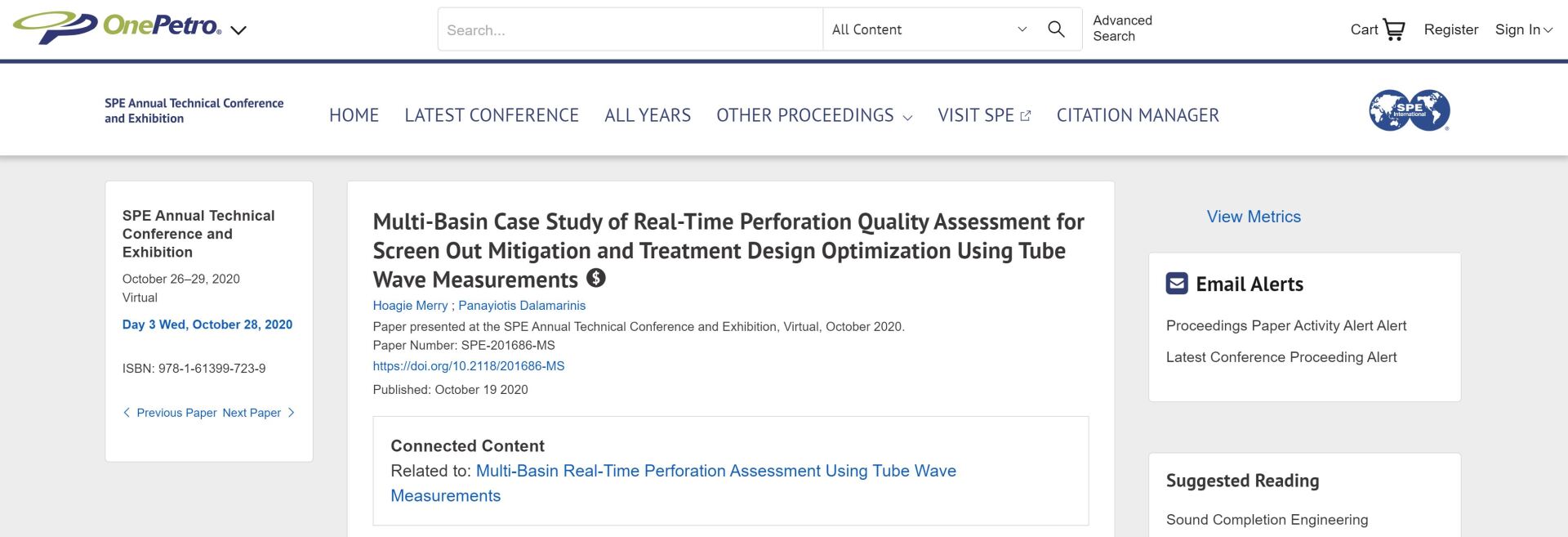MWF™
Measurements While Fracturing
What's MWF?
Real-time Quality Control Agent for Fracturing
Seismos MWF™ extends beyond fracture diagnostic technologies, displacing the need for fiber optics by introducing a plug-and-play system that seamlessly connects to the wellhead and uses acoustics and AI to continuously monitor each stage's stimulation performance.
Operational advantages:
No need for fiber optics
1502 connection to wellhead
Continuous monitoring behind the scenes
Real-time prompts
Applications
Can't improve what isn't measured
The Seismos MWF ™ (Measurements While Fracturing) Quality Control system embeds a one-of-a-kind measurement referred to as NFCI (Near Field Connectivity Index). NFCI is a patented measurement of the reciprocal of flow resistance (NFCI = 1/flow resistance) in the near wellbore area. The higher the NFCI, the higher the ability of the fracture network in the near field (near wellbore) area to allow hydrocarbon inflow into the wellbore.

Maximize near wellbore stimulation
Identify optimal/suboptimal connected fracture systems
Understand far field fracture geometry
Influencers
NFCI sensitivities to stimulation treatment, geology,
and stress interactions
A critical advantage and differentiator of NFCI is the high sensitivity to critical parameters such as stimulation treatment, geology, stresses, and number of clusters taking fluid.
Below are some examples visualizing such differences:
Treatment
Varying stimulation design parameters (cluster design, perforation design, stage spacing, and so on) has a material effect on fracture system properties, and how such changes in fracture system properties are captured by the NFCI measurement.
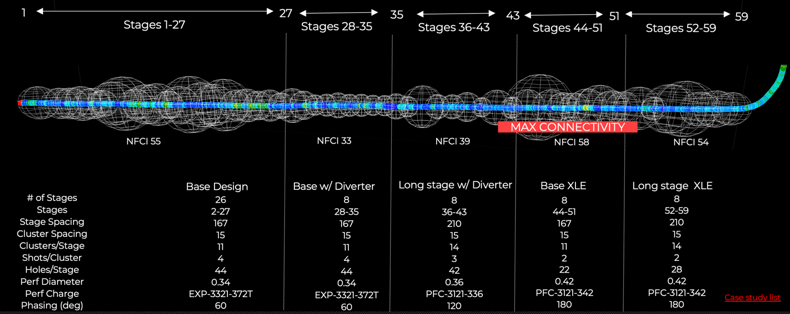
Geology
Lorem ipsum dolor sit amet, consectetur adipiscing elit, sed ipsum dolor sit amet, consectetur adipiscing elit.Lorem ipsum dolor sit amet, consectetur adipiscing elit, sed ipsum dolor sit amet, consectetur adipiscing elit.
- Lorem ipsum dolor sit amet, consectetur adipiscing elit, sed ipsum dolor sit amet, consectetur adipiscing elit.
- Lorem ipsum dolor sit amet, consectetur adipiscing elit, sed ipsum dolor sit amet, consectetur adipiscing elit.
- Lorem ipsum dolor sit amet, consectetur adipiscing elit, sed ipsum dolor sit amet, consectetur adipiscing elit.
Geology
The following image demonstrates the NFCI's ability to reflect on fracture system differences caused by subtle geology changes across the lateral (in this case, a well transitions from the Upper Austin chalk to the Lower Austin chalk). Such geological changes (whether from stage to stage or from well to well) frequently result in distinctly different fracture system properties. NFCI indicates a much better connection between the wellbore and the extended reservoir with increased brittleness at the Upper Austin Chalk lateral section.
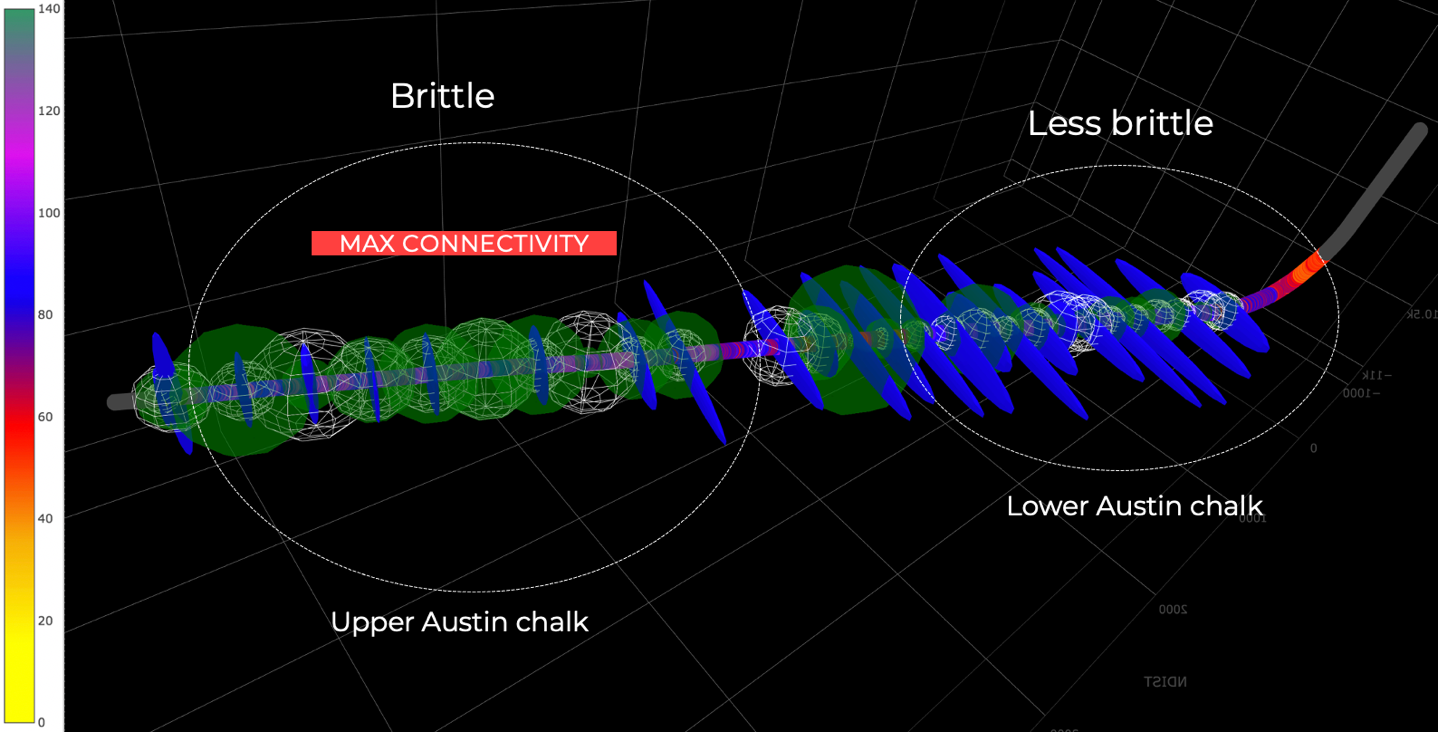
Offset Stresses
The example below depicts the completion of a two-well zipper and the transition (for one of the two wells) from an unbounded to a bounded section. As the fracture systems approach each other - at the bounded section - NFCI demonstrates high sensitivity to fracture-driven interactions which is reflected on a consistent oscillating behavior of the NFCI values (as also visualized by the white spheres on the above visual). The proper sequencing of stimulation stages across the zipper can help reduce the overall stress interaction and ensure NFCI uniformity across both laterals.

FEATURES 5
Lorem ipsum dolor sit amet, consectetur adipiscing elit, sed ipsum dolor sit amet, consectetur adipiscing elit.Lorem ipsum dolor sit amet, consectetur adipiscing elit, sed ipsum dolor sit amet, consectetur adipiscing elit.
- Lorem ipsum dolor sit amet, consectetur adipiscing elit, sed ipsum dolor sit amet, consectetur adipiscing elit.
- Lorem ipsum dolor sit amet, consectetur adipiscing elit, sed ipsum dolor sit amet, consectetur adipiscing elit.
- Lorem ipsum dolor sit amet, consectetur adipiscing elit, sed ipsum dolor sit amet, consectetur adipiscing elit.
Active Clusters
NFCI reflects on the number of clusters taking fluid. A cross correlation to camera data (capturing cluster erosion) shows that as more clusters take fluid, NFCI values increase proportionally, indicating a better connection between the wellbore and the extended fracture system.
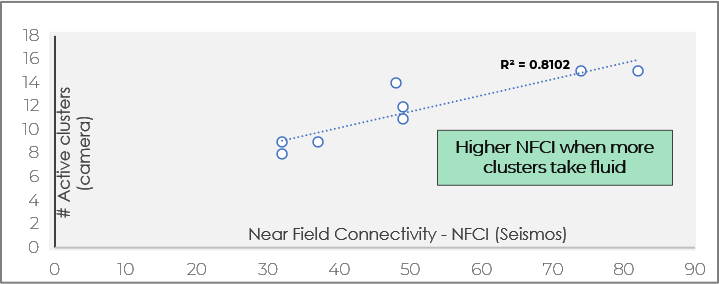

Features
Turning each well into a winner
Completions Optimization
1. Adjust frac sequence to control stress interactions
2. Establish sufficient connectivity to the reservoir
3. Enable lateral stimulation consistency
Test Designs
Quality Assurance
